Ensaimada de Mallorca
Friday, May 24, 2024
For those yet unacquainted with the sensory pleasure that is the Ensaimada de Mallorca, you're in for a treat that goes beyond the ordinary. This traditional recipe from the Balearic gastronomy, famed not just for its sobrasada but for this exquisite pastry too, is poised to take your taste buds on a journey. For the uninitiated, the ensaimada is an emblematic pastry from Mallorca, an island known for its culinary riches. The name 'ensaimada' itself hints at its indulgence, deriving from "saïm" meaning lard, a key ingredient that promises a taste of extravagance in each spiral.
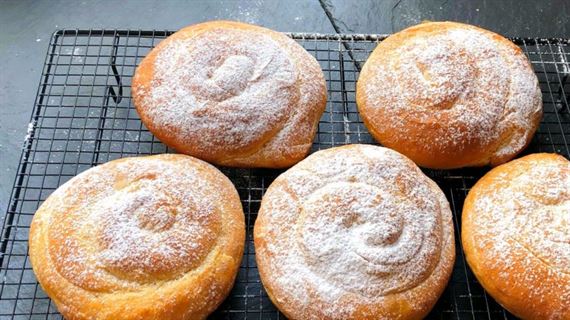
Committing time to its preparation, especially the necessary proofing period, guarantees a confection that's as rewarding to make as it is to savour. For those embarking on this culinary venture, the advice is to let the dough proof overnight and bake it in the morning, making for a breakfast so delightful, it'll become an unforgettable part of your repertoire.
Ingredients
The journey begins with gathering your ingredients, a crucial step to ensure the ensaimada's authentic taste and texture:
Method: Crafting Your Ensaimada
The Preparatory Phase
-
Begin by slightly warming the water—this should not be too hot, just pleasantly warm to the touch. This is crucial for dissolving the yeast. In a bowl, dissolve the yeast in the water, ensuring it's fully integrated.
-
Take a large mixing bowl and place the flour within. To this, add the yeast mixture, the beaten egg, sugar, and a pinch of salt. This marks the beginning of your dough's journey.
-
Dedicate about fifteen minutes to kneading. This process isn't just about mixing; it's about infusing the dough with elasticity and smoothness. Continue until you achieve a silky-smooth texture.
-
Shape the dough into a ball and transfer it to a bowl lightly greased with oil. Now, it's time for the dough to rest and double in volume. This takes a minimum of an hour but is vital for the texture.
The Shaping
-
Once proofed and airy, punch down the dough to release excess air, then divide it into six equal parts. It's from these parts that each unique ensaimada will begin to take shape.
-
Roll out each portion with a rolling pin extensively. The aim is to get them as thin as possible without tearing. This is when you generously coat each rolled-out dough with lard, laying the foundation for its unique flavour.
-
Carefully roll each sheet into a tight log. Allow it to rest; this relaxes the gluten, making it easier to shape. Stretch each log gently, then coil it into a spiral on a baking sheet lined with parchment paper, ensuring there's space between the spirals to allow for expansion.
The Second Proof: An Overnight Affair
-
Place the trays in an oven with a cup of water (the oven should be off) and leave them to proof overnight or for about ten hours. This slow fermentation is the secret behind the ensaimada's texture and depth of flavour.
-
Preheat your oven to 200°C, and bake the ensaimadas for 10-12 minutes, or until golden. When ready, let them cool before dusting generously with icing sugar.
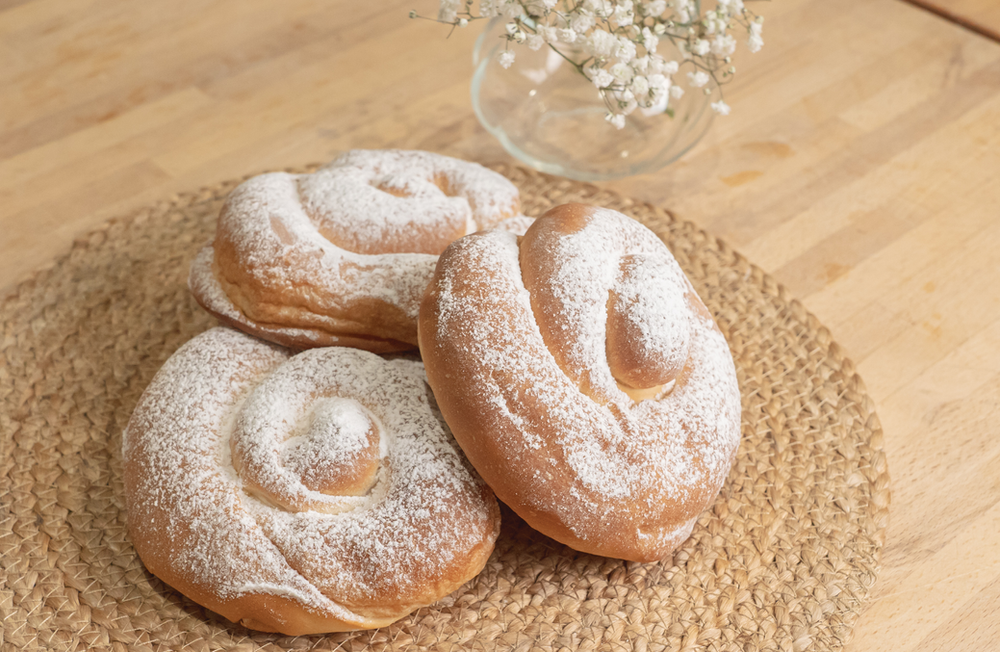
Serving Your Ensaimada
The true joy of ensaimada lies in its versatility—the pleasure of consuming it in its pure, unadulterated form or delighting in variants filled with 'cabello de ángel' (angel hair, a sweet pumpkin jam) before rolling, offering another layer of taste. Pairing it with a thick Spanish hot chocolate elevates the experience, creating a combination that's hard to surpass.
In conclusion, the Ensaimada de Mallorca is not just a recipe; it's a testament to the rich culinary tradition of the Balearic Islands, a celebration of simple ingredients transformed into an extraordinary delight. Whether for a special breakfast, an afternoon snack, or to celebrate a significant occasion, the ensaimada promises a moment of joy in every spiral. Its preparation, a process that involves patience and care, not only brings the flavours of Mallorca to your table but also the island's tradition of taking time to create something truly wonderful. So, why wait? Embark on this culinary adventure and let the ensaimada be a delicious testament to your baking prowess!
 0
Like
Published at 7:32 PM Comments (1)
0
Like
Published at 7:32 PM Comments (1)
Inland beaches & Pools - Spain
Saturday, May 18, 2024
With these high temperatures that we are experiencing in recent days, a quick dip is the best solution. But Inland Spain, lacking coasts, has its charms, which are boundless, but it also has idyllic and essential places to soak oneself and cope with this “inhumane” heat in the best possible way.
I invite you to get to discover those places, sometimes unknown, that deserve to be visited to freshen up, some of them located in strategic natural settings. These are lakes, lagoons, river beaches, natural pools or pools that can be found in Castilla y León, Castilla-La Mancha, Aragón, Extremadura, La Rioja, or Navarra. They are of Cours many many more, but this is a good start...
Sanabria and river beaches in Zamora
Our journey starts in Castilla y León, specifically in the province of Zamora, which has a wide range of places to swim, with the Sanabria Lake. But also in Puebla de Sanabria we find the area of "La Chopera" or in Trefacio "La Corneira".
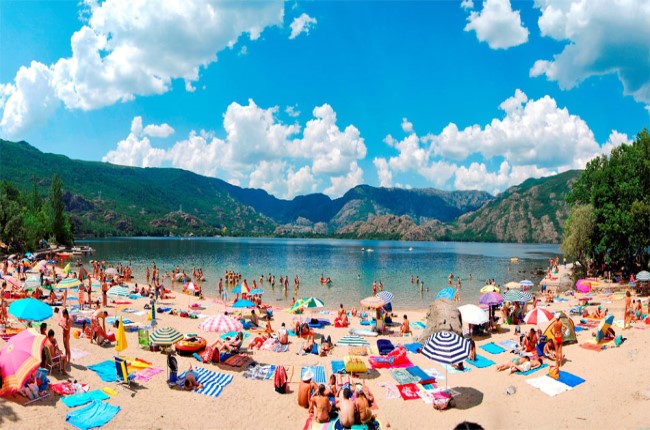
Two river beaches sheltered by reservoirs are found in Cional and Villadeciervos, and the Ricobayo river beach in Zamora is also worth mentioning, or in the capital itself, the “Los Pelambres” recreational area, on the banks of the Duero River.
More in Castile and Leon
If we go through the provinces and start with Ávila, the Charco del Risquillo natural pool deserves to be included, in the heart of the Tiétar Valley, without forgetting the Navaluenga Natural Pools. In León, we are also left with another natural pool, that of Vega de Espinaredasta, one of the largest in the Bierzo region. But we cannot forget the beaches of Balboa or La Ribera de Folgoso or other natural pools in Cacabelos, Llamas de la Ribera or Villafranca del Bierzo. While in Palencia, the Ruesga reservoir is well worth a good swim. On to Segovia, it is worth visiting the Fuente de la Salud in Sepúlveda while in Soria the Pita Beach is the bathing area par excellence in the province.
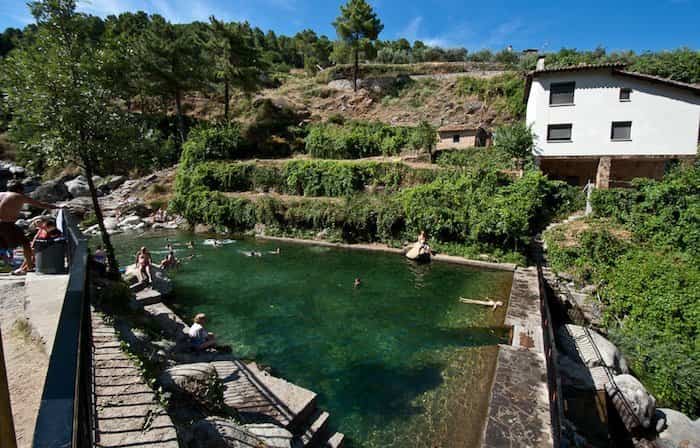
The Rioja
In the middle of the González Lacasa reservoir, the Club Náutico El Rasillo awaits us, the only place authorized to bathe in Riojan lands. But there are also natural pools, such as the Iregua Park, where you can enjoy the crystal clear and cold waters of the river.
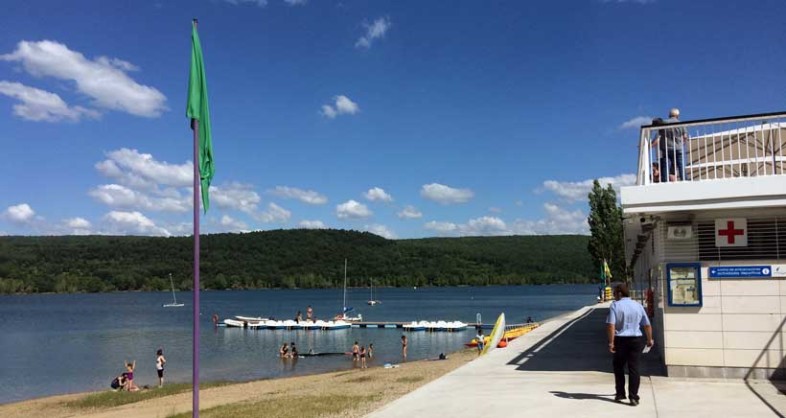
Navarre
River pool of Uztárroz
There are also no beaches in this Autonomous Community, but there are several river areas where you can cool off. One of them is the Urederra River, as it passes through Zudaire and Artavia. Some small pools with cold water. Another point of interest is found in the Alloz reservoir, a privileged place for both fishing and water sports. In Beriáin we come across the Morea raft. And one last recommendation: the Uztárroz river pool, with fresh waters that do not exceed 17 degrees in temperature.
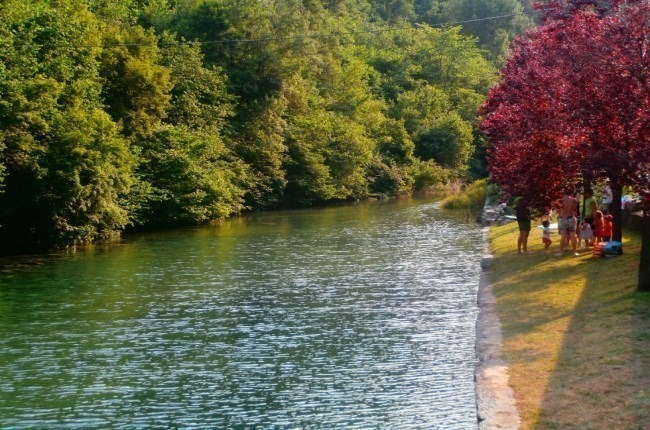
Castilla la Mancha
The Castilian La Mancha community has more than thirty authorized bathing areas, exactly 35. There are several options for bathing here, from the Alarcón Reservoir, passing through the Bolarque Lake in Almonacid de Zorita in Guadalajara, which is joined by the La Toba reservoir (Cuenca) or the Entrepeñas reservoir. But the most famous is found in the Lagunas de Ruidera, especially the pool in Laguna Colgada better known as "Plaza Toros", without forgetting the natural pool of Las Chorreras.
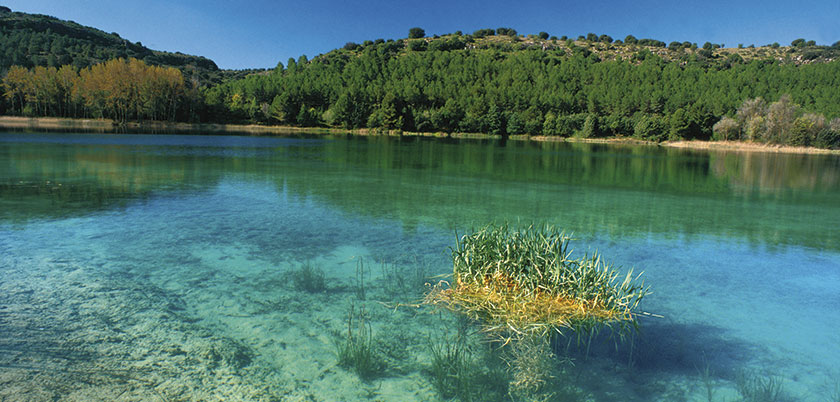
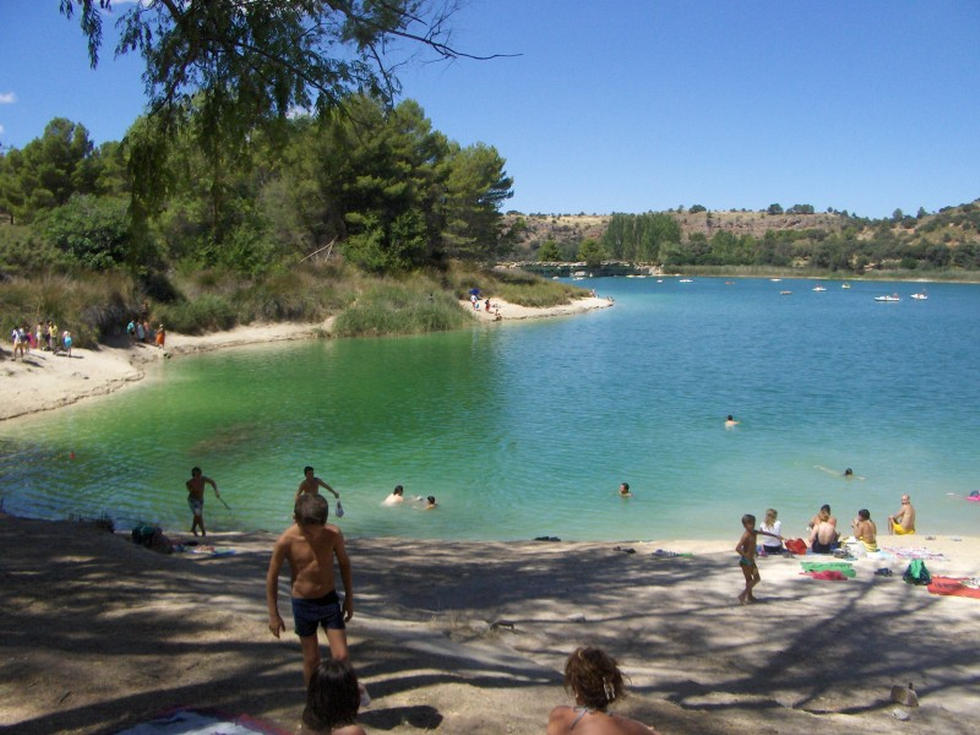
Aragon
The natural spaces in the Aragonese community are varied, starting with the Pyrenees of Huesca, which gives the visitor unexpected dreamlike landscapes. And if they also allow a refreshing dip, what more could you ask for? We begin our journey through Huesca, through one of the most popular areas, Salto de Bierge, located in the Sierra y Cañones de Guara Natural Park. Another option is the Búbal Reservoir, over which a zip line, not suitable for the faint of heart, flies over.
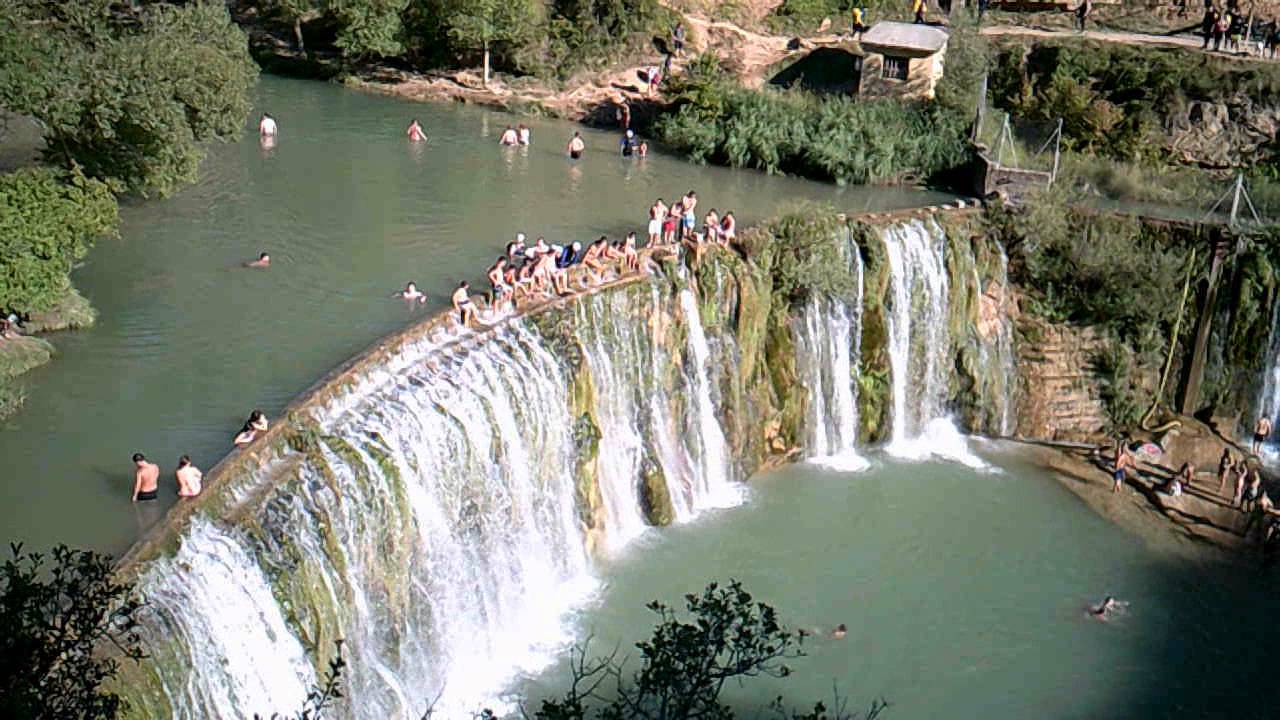
In Zaragoza we find two well pools in Los Chorros in Belchite and El Pígalo in Luesa. Another natural pool is that of Peña del Cuervo, near the capital. And in Teruel, there are three ideal places, the Bergantes river pool, the Valbona reservoir and the Pesquera pools in Beceite.
Extremadura
The Community of Extremadura does not have a coast either, but it does have idyllic places to get lost and river beaches and pools of ten. One of them is found in the Valle del Jerte, in the so-called Garganta de Los Infiernos, with numerous pools. Other nearby places are the Natural Pool of Carreciá in Acebo or those of La Codosera. If we want a beach, Entrerríos between the Zújar and Guadiana rivers has a beach to spend a great day with the family.

 2
Like
Published at 1:45 AM Comments (0)
2
Like
Published at 1:45 AM Comments (0)
How to Make Homemade Churros: A Step-by-Step Guide
Saturday, May 4, 2024
Churros have become a cultural icon across Spain, a sweet treat savoured from north to south, perfect for breakfast or an afternoon snack, served with hot chocolate or coffee. This delightful and simple dish, rooted in Spain and dating back to the Morisco era, is not only easy to make but is deeply ingrained in Spanish gastronomy. The recipe itself is straightforward, relying on a dough made from flour, water, and salt, fried to perfection and often sprinkled with sugar just before serving. The beauty of churros lies not only in their taste but in the cultural significance and the warmth they bring to the table.
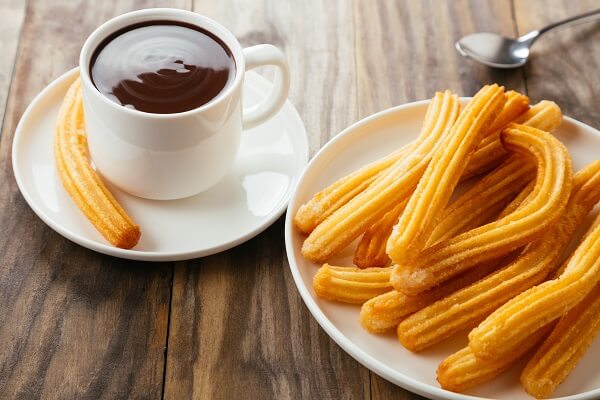
While the recipe has remained largely unchanged over time, regional variations abound, from the shapes to the fillings like chocolate ganache, custard, or dulce de leche. In this guide, we'll reveal how to create this delightful snack at home.
Ingredients for Making Churros:
-
250g all-purpose flour (bread flour can also be used)
-
250g water
-
1 teaspoon of salt (roughly 8 grams)
-
Sugar to sprinkle
-
Mild olive oil or sunflower oil for frying
-
Kitchen paper towel
-
A manual churrera or a piping bag with a fine nozzle
Step 1: Preparing the Churro Dough
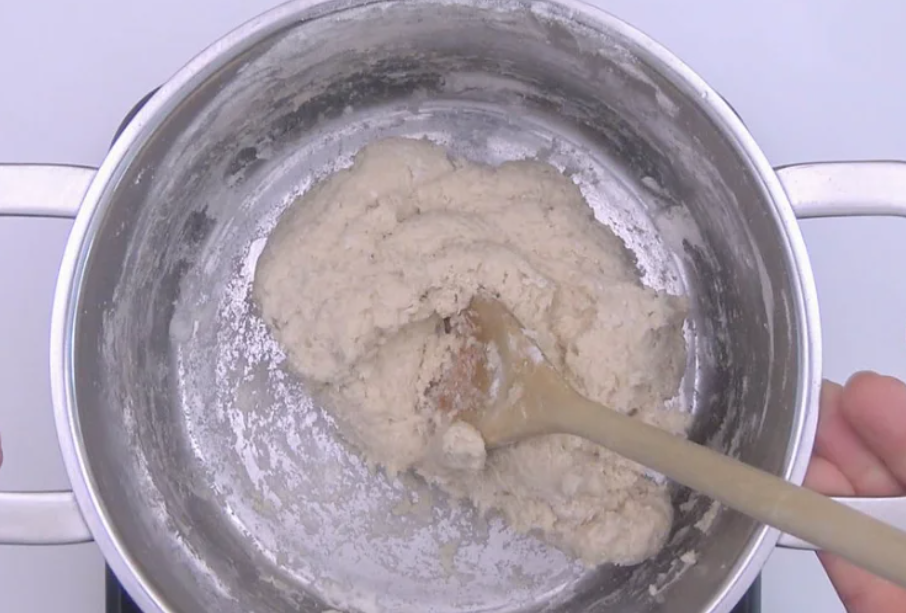
Firstly, place the flour into a large mixing bowl. Next, heat water with salt in a saucepan. Once the water begins to boil, pour it directly and quickly onto the flour. Using a wooden spoon, integrate the water with the flour until you obtain a very sticky and fairly compact dough.
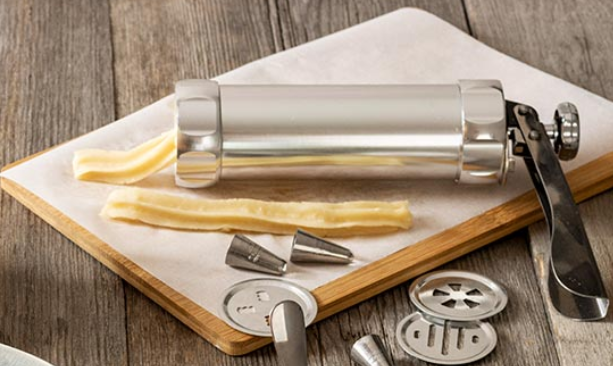 A vital step in the churro-making process is transferring this dough into a churrera or a piping bag. This is crucial for a successful outcome, as it helps compact the dough and eliminate air, which is key to preventing the churros from bursting during frying. A vital step in the churro-making process is transferring this dough into a churrera or a piping bag. This is crucial for a successful outcome, as it helps compact the dough and eliminate air, which is key to preventing the churros from bursting during frying.
If you don't have a churrera, a piping bag with a star-shaped nozzle will suffice, though the results may vary slightly. Disposable plastic piping bags can typically be found in speciality bakeware shops or online.
Step 2: Moulding and Resting the Raw Churros
Portion out the churro dough on a clean kitchen towel or baking paper laid out on your counter. This cooling period allows the dough to become manageable and reduces the likelihood of splitting or explosions when frying.
Step 3: Frying the Churros to Perfection
Heat a generous amount of mild olive or sunflower oil in a frying pan. The oil temperature should ideally measure between 195°C and 200°C for churros (or 230°C for 'porras', a thicker variant of churros) before introducing the dough for frying.
Cook over medium heat to ensure that the churros are thoroughly cooked inside without burning on the outside. If using a piping bag, exercise extra caution to avoid splattering since the dough might be more prone to form air bubbles than with a churrera.
Once fried, transfer the churros onto kitchen paper to drain the excess oil. Serve them warm, sprinkled with granulated or powdered sugar, and indulge in this classic Spanish delight.
Tips for Exquisite Churros
-
Churros should be crispy yet not oily.
-
Involving the family, especially children, in making churros adds to the enjoyment, and they taste great with hot chocolate.
-
If you have leftovers, freeze the uncooked churros as you would with croquettes. Lay them out separately on a tray to prevent sticking. Once frozen solid, they can be stored in bags and fried straight from the freezer.
-
Porras differ in that they may contain yeast and are rested before frying.
Churro Expert Advice:
Expert churro makers advise using strong bread flour (harina de fuerza) and emphasise the importance of a good quality churrera. The mouthpiece of the churrera should create well-defined grooves in the dough, as those from lower-quality churreras may not produce the ideal texture and may affect the frying process.
Whipping up homemade churros is both an art and a tradition. With this step-by-step guide and some personal touches, you can bring the joy of this beloved Spanish treat into your home to share with family and friends. Whether for a leisurely Sunday brunch, a festive gathering, or just because, homemade churros promise to be a crowd-pleaser that brings a taste of Spain to your table!
 0
Like
Published at 12:47 PM Comments (3)
0
Like
Published at 12:47 PM Comments (3)
Spam post or Abuse? Please let us know
|
|